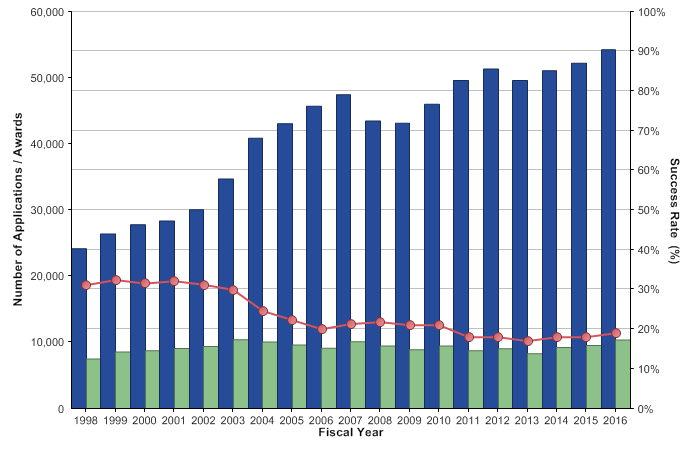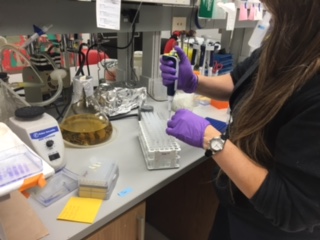Funding research at the University of Iowa
Funding from NIH is declining at the University of Iowa and across the United States

The National Institutes of Health (NIH) invests $32 billion a year into scientific research and is the largest public funding agency of biomedical research in the world. But, at the University of Iowa and throughout the United States, funding for the NIH is declining and has been declining since 2003.
Within the NIH there are 25 different divisions that focus on separate research topics. The different divisions include aging, environmental health sciences, the National Cancer Institute, and the National Institute of General Medicine. Dr. M. Todd Washington, a professor of biochemistry at the University of Iowa, gets his grants funded through the general medicine division.
A grant is an application scientists write to persuade NIH to fund their future research. Grants are then reviewed by NIH and if the grants meet their standards, then the NIH will give the scientist who wrote the grant, money to do the research.
“[Funding] has been declining not only in the University of Iowa, but across the country. In all universities,” said Dr. Maria Spies, a professor of biochemistry at the University of Iowa.
This is true, according to NIH’s website, in 2003 the success rate of grants was at 30%, but then in 2004 the success rate dropped to 25%. From 2002 to 2003 the success rate dropped 1% and that was the same with most of the other years recorded from 1998 to 2016. The success rate usually would change about 1% each year. But, dropping 5% in one year isn’t typical. The success rate continued to drop rapidly until it reached an all time low of 17% in 2013.
 Source: NIH IMPAC, Success Rate File.
Source: NIH IMPAC, Success Rate File.![]()
“There was a horrible constriction in the late 1980s early 1990s, which was when I was starting my career and lots of the institutes—the National Institutes of Health—went into what is called single digits,”said Dr. Madeline Shea, a biochemistry professor at the University of Iowa. Single digits is when less than 10% of the grants that are submitted are funded. “Then, there was a very important bipartisan effort to double the budget of the National Institutes of Health. So, then there was [a] sort of glory days… And then it has constricted again. So, if it’s been in cycles… it has not just been a steady decline there’s been ups and downs. But, currently the last ten years… there has been an erosion of that doubling, so we are pretty much back to where we started,” said Dr. Shea.
Not getting a grant can be devastating, like in Dr. Washington’s case.  Recently, Dr. Washington got his grant responses back and NIH refused his grant proposal. Dr. Washington had a research scientist that worked with him since the start of his lab, 14 years ago, and she lost her job due to the refusal of his grant proposal. “I’m extremely sad, because I love what I do and it is extremely hard to walk away from something that you built with the PI [the scientists that runs the lab]. This lab is as much my lab as it is his lab… I [am] going to miss the science and it’s hard to walk away from something that you love to do.” said Christine Kondratick, a former research scientist in Dr. Washington’s lab.
Recently, Dr. Washington got his grant responses back and NIH refused his grant proposal. Dr. Washington had a research scientist that worked with him since the start of his lab, 14 years ago, and she lost her job due to the refusal of his grant proposal. “I’m extremely sad, because I love what I do and it is extremely hard to walk away from something that you built with the PI [the scientists that runs the lab]. This lab is as much my lab as it is his lab… I [am] going to miss the science and it’s hard to walk away from something that you love to do.” said Christine Kondratick, a former research scientist in Dr. Washington’s lab.
NIH isn’t funding as many grants for research scientists as it used to, which forced labs to shut down and constrict their research due to not getting the funding they need from NIH. “When it comes to science, we are essentially in the Great Depression,” said Dr. Washington.